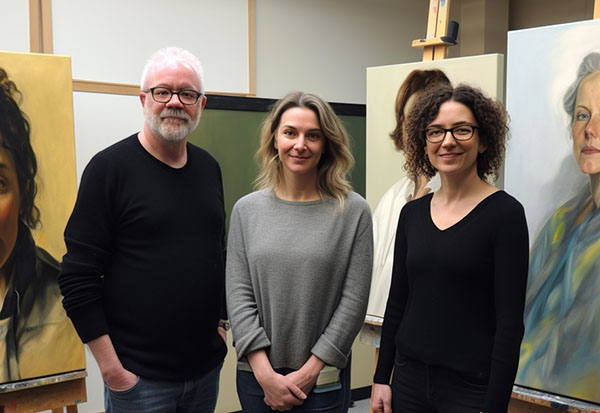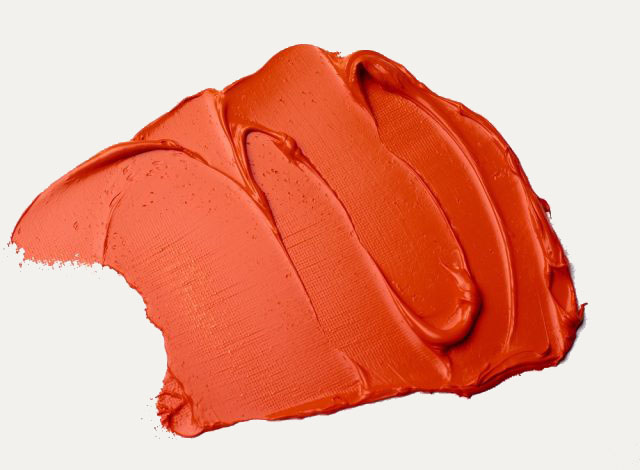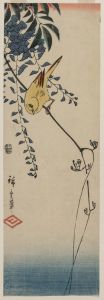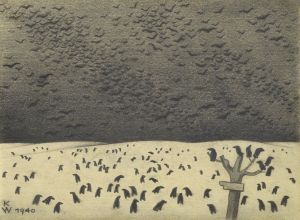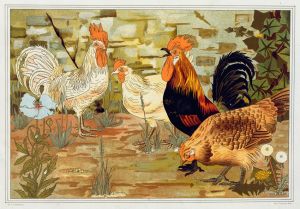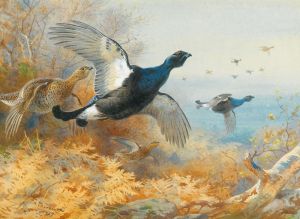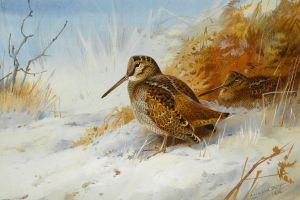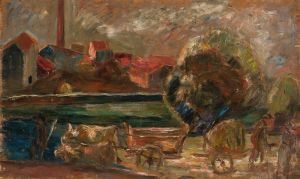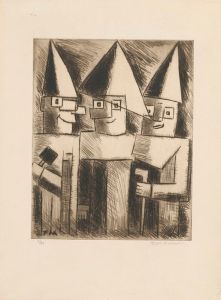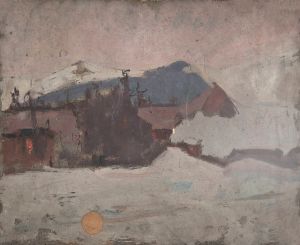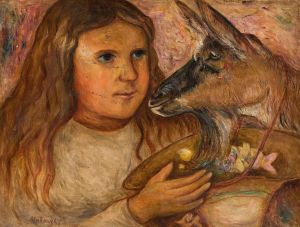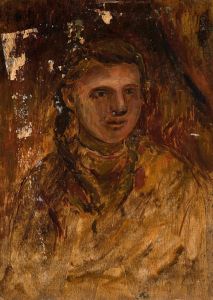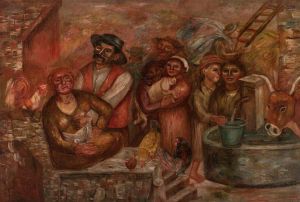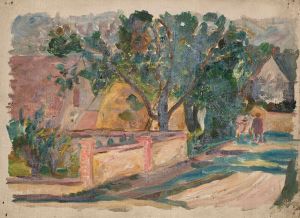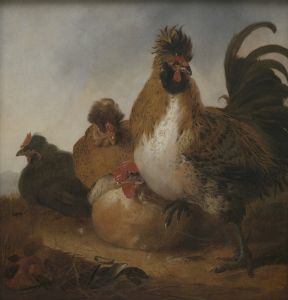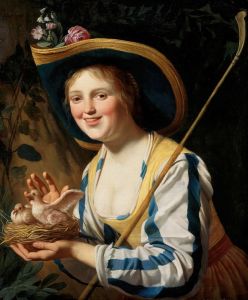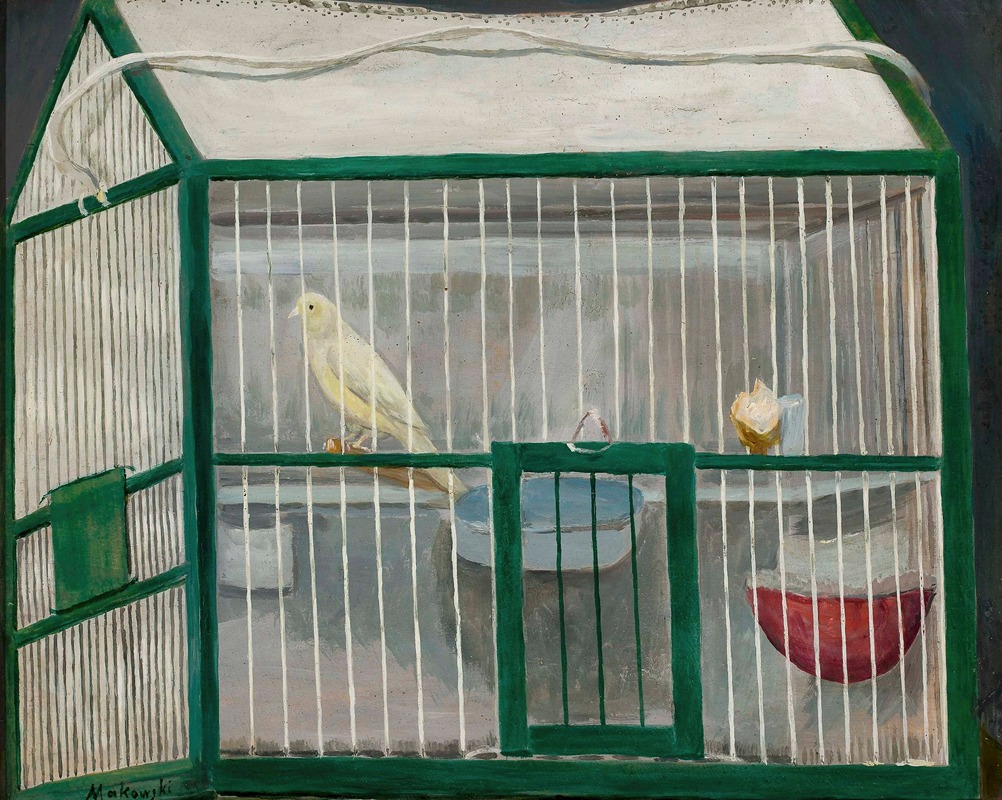
Cage with a canary
A hand-painted replica of Tadeusz Makowski’s masterpiece Cage with a canary, meticulously crafted by professional artists to capture the true essence of the original. Each piece is created with museum-quality canvas and rare mineral pigments, carefully painted by experienced artists with delicate brushstrokes and rich, layered colors to perfectly recreate the texture of the original artwork. Unlike machine-printed reproductions, this hand-painted version brings the painting to life, infused with the artist’s emotions and skill in every stroke. Whether for personal collection or home decoration, it instantly elevates the artistic atmosphere of any space.
Tadeusz Makowski was a Polish painter known for his unique style that combined elements of folk art with modernist influences. Born in 1882 in Oświęcim, Poland, Makowski initially studied classical philology at the Jagiellonian University in Kraków before pursuing his passion for art at the Academy of Fine Arts in Kraków. Under the tutelage of prominent artists like Józef Mehoffer and Jan Stanisławski, Makowski honed his skills and developed a distinctive artistic voice.
Makowski moved to Paris in 1908, where he became part of the vibrant artistic community that included many avant-garde artists of the time. His work was influenced by the various movements that were flourishing in Paris, such as Cubism and Expressionism, yet he maintained a unique style that often depicted scenes of everyday life with a whimsical and childlike quality.
"Cage with a Canary" is one of Makowski's notable works, reflecting his fascination with simple, everyday subjects imbued with deeper meaning. The painting features a cage containing a canary, a motif that Makowski explored in several of his works. The canary, often seen as a symbol of fragility and innocence, is depicted with a sense of tenderness and care. Makowski's use of color and form in this painting is characteristic of his style, which often involved muted tones and simplified shapes that evoke a sense of nostalgia and introspection.
The painting is executed with a delicate balance of light and shadow, creating a serene and contemplative atmosphere. Makowski's brushwork is subtle yet expressive, capturing the essence of the subject with minimal detail. This approach aligns with his broader artistic philosophy, which sought to convey emotion and meaning through simplicity and abstraction.
Makowski's work, including "Cage with a Canary," is often associated with a sense of innocence and purity, reflecting his interest in the world of children and the simplicity of rural life. His paintings frequently feature themes of childhood, play, and nature, rendered in a style that is both modern and timeless.
Throughout his career, Makowski exhibited his work in various galleries and exhibitions, gaining recognition for his unique contribution to modern art. Despite the challenges of his time, including the impact of World War I and the interwar period, Makowski continued to create art that resonated with audiences for its emotional depth and aesthetic beauty.
Makowski passed away in 1932, but his legacy endures through his paintings, which continue to be celebrated for their charm and originality. "Cage with a Canary" remains a testament to Makowski's ability to capture the essence of his subjects with simplicity and grace, offering viewers a glimpse into a world where the ordinary is transformed into the extraordinary through the eyes of an artist.

